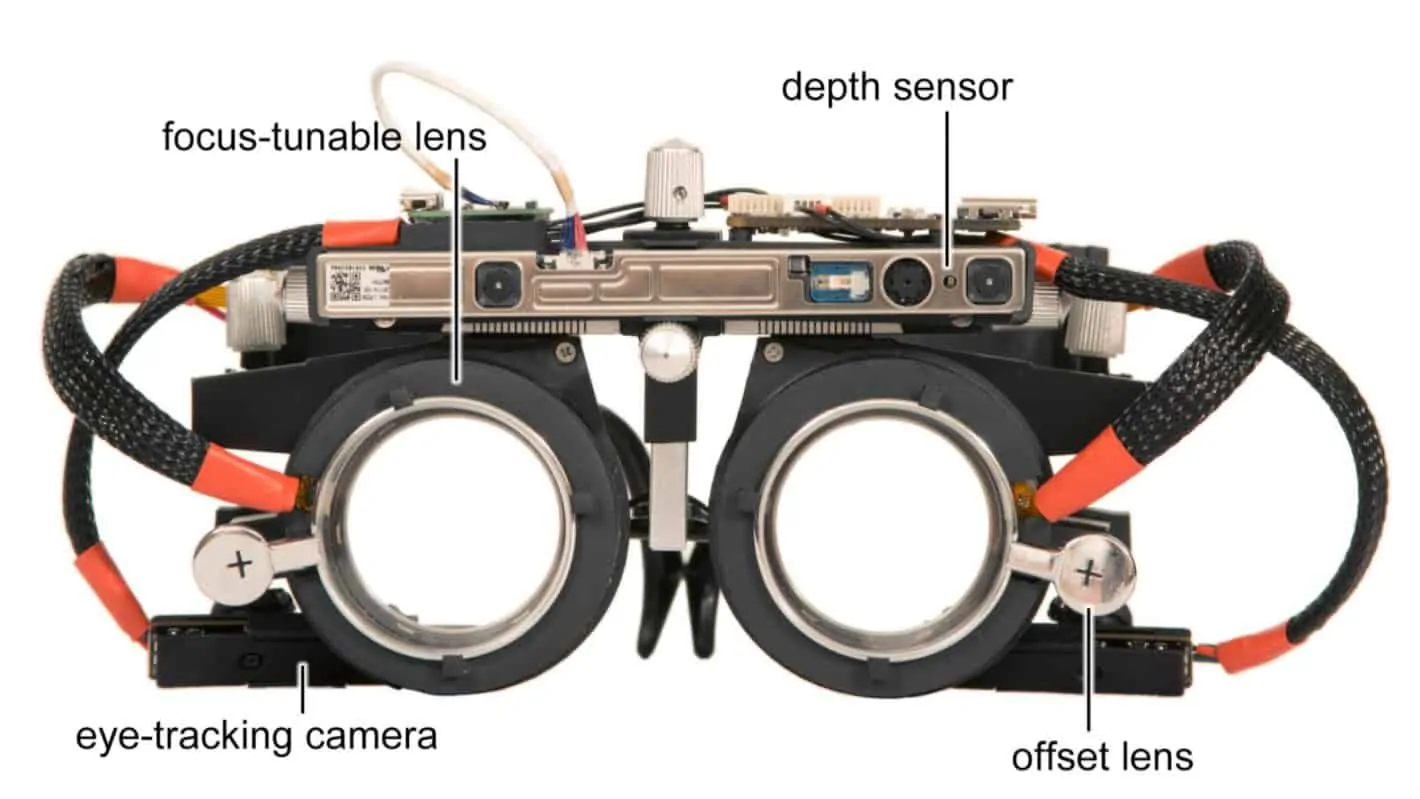New research conducted by Stanford University researchers and directly inspired by the latest innovations in VR could help address problems with eyesight commonly associated with aging. The new technology, dubbed ‘Autofocals’ by researchers Nitish Padmanaban, Robert Konrad, and Gordon Wetzstein, could be viewed as a brand new VR or AR system without the addition of a screen. At the center of the design is a complex combination of liquid crystal (LC) lenses that are focus-tunable, depth sensors, and eye-tracking cameras. Using 3D-printed components, the prototype of Autofocals is currently comprised of those components mounted to a universal optometrist trial lens frame – traditionally used by eye doctors. In effect, the system uses a specially designed algorithm to gauge where and at what distance a wearer is focusing their gaze. That can be accomplished down to a distance of 25-centimeters with the current prototype. The lenses are then corrected to provide a clear focus at that point at that distance, similarly to how the human eye ordinarily works or how the latest VR headsets generate a realistic level of immersion.
According to the technology’s associated research paper, the central purpose of Autofocals is to create a better solution to a nearly universal vision problem called Presbyopia, which affects nearly 20-percent of the population. It’s a problem experienced with age as the naturally-occurring crystalline lenses in the human eye stiffen over time. The resulting issue is a severe reduction in the eye’s ability to adjust and focus at variable distances. Current solutions, such as progressive or monovision eyeglasses leave wearers having to choose between a reduced field of view or loss of stereo vision to improve the range of clear vision. Those also require adjustment on behalf of the wearer due to a near-complete loss of natural eye function. Autofocals are intended to address that problem by allowing natural eye movement and computationally refocused lens technology in a wearable.
With that said, the conclusion reached by the researchers doesn’t assume that the current iteration is ready for the real world or that it is a complete fix yet. The team does say that its current technology is comparable to and sometimes better than traditional correction methods without some of the limitations. Instead, Autofocal is meant to be a stepping stone toward something better. The assessment makes sense since eyeglasses can be as much a fashion statement as a necessity. Further advances in component technology will be required to squeeze everything down into an affordable solution that everyday users will be comfortable wearing.



